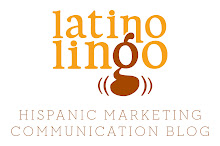Bigelow Tea launches first Hispanic marketing campaign
The new campaign is called, “Dale Sabor a Tu Vida” (Add Flavor to Your Life), and reflects the quality and flavor difference of Bigelow Tea’s more than 80 varieties of flavored, traditional, green, organic green, herbal, decaffeinated, and iced teas.
The campaign, was created by our agency Bauzá & Associates, and begins with a newspaper insert that are being distributed in Miami, Los Angeles, Houston and New York City and a micro site at http://www.tebigelow.com/. Future campaign plans include a print advertising, direct mail, public relations as well as event support and promotional sampling in cities like Miami.
“Hispanics are a very important part of our consumer base and the research clearly shows that, as consumers, they remain loyal to brands based on taste and quality, both areas where Bigelow Tea differentiates itself,” said Cindi Bigelow, President, Bigelow Tea. “The theme ‘Dale Sabor a Tu Vida’ echoes this sentiment as well as reflects a passion and zest for adding flavor to your life that is culturally-relevant.”
Labels: Bigelow Tea, Hispanic advertising, Hispanic marketing

